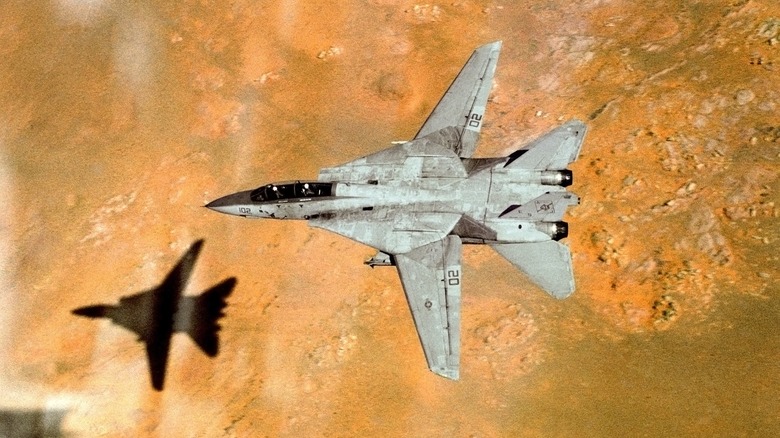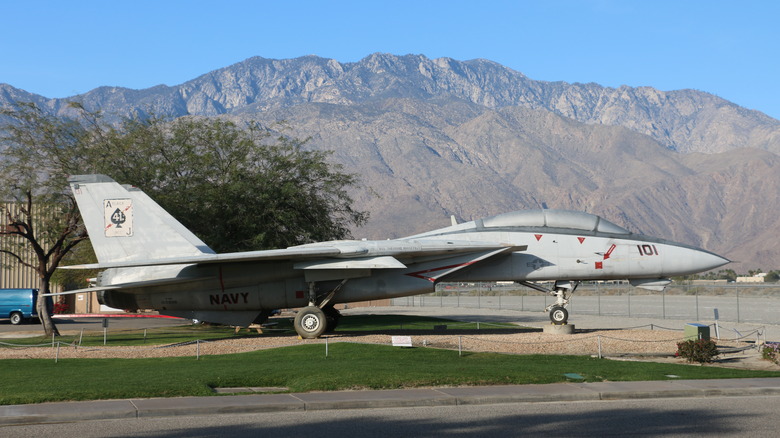Why So Many F-14 Tomcat Jets Were Destroyed By The Defense Department
Between 1969 and 1991, the Grumman Corporation built 632 of the US Navy's legendary F-14 Tomcat. Its primary purpose was to track down and intercept Soviet bombers. With double engines that could produce 21,000 pounds of thrust and wings that could be swept back inflight to an angle of 68 degrees, it could reach speeds over Mach 2, twice the speed of sound and equivalent to 1,544 mph.
And yes, the F-14 is the plane Maverick (Tom Cruise) flies in the 1986 film, "Top Gun."
While it didn't see its first action until 1981 (shooting down two Libyan fighters), it would go on to take a prominent role in the Gulf, Iraq, and Afghan Wars. It was the star of the Navy's aerial show for many years. But, as the old proverb goes, all good things must end, especially things built around technology, which become obsolete much faster because technology advances exponentially.
The last F-14 was retired in 2006, having amassed 4,958 flight hours and 1,188 catapult shots from aircraft carriers. The Defense Department had initially planned to destroy any parts specific to the Tomcat but still allow the sale of its other parts that could be harmlessly used on other planes.
However, in January 2007, the Associated Press discovered that other countries like Iran, then the only country that maintained an active fleet of F-14s, were on the prowl for Tomcat parts.
The Tomcat's parts were still valuable
Ironically, the United States had sold 80 Tomcats to Iran back in the 1970s when they were still considered allies.
Then, in March 2007, federal agents confiscated four F-14s after they were found to have not been appropriately demilitarized and erroneously sold to private companies in "unauthorized deals." Three of the planes came from two different air museums in Chino, California (sold to them for $4,000 each), while the fourth had been used as a prop for the TV show "JAG."
Nothing criminal was uncovered, but U.S. Immigration and Customs Enforcement (ICE) still considered it a massive vulnerability and believed it was possible that parts from these old planes, which the buying parties swore were acquired legally, could be stripped off and sold through obvious gaps in surplus military auctions and illegally exported.
A massive effort was made to track down and destroy as many of the 633 Tomcats made for the Navy that still existed. Hundreds were chewed up and scrapped at the military's "boneyard" for retired aircraft at the Davis-Monthan Air Force Base in Tucson, Arizona. Overall, the move was viewed as symbolic as the F-14s were technologically obsolete by then, with one former White House deputy chief of counterterrorism comparing them to old Chevrolets still used in Cuba.
Some ninety Tomcats reside in air museums around the country, and it's believed that as many as fifty (but perhaps as few as a dozen) may still exist in Iran.

